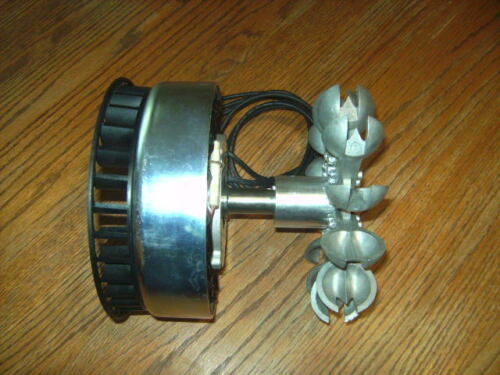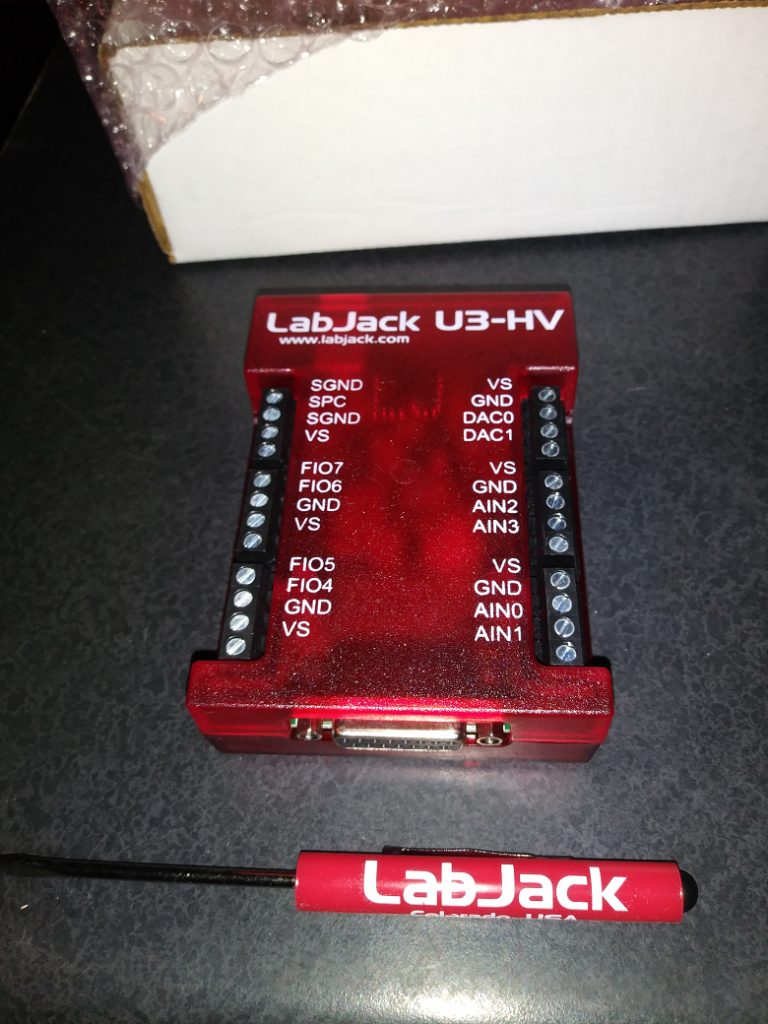Back to the garage, at least virtually. As I reported recently, I ordered a Pelton wheel and generator combo. It should be here in a week or so. That particular tangible object (which I described as a “toy”) is not going to change my life in any practical way. So why’d I buy it? (1) Any excuse to buy toys. (2) Doing hands-on stuff keeps me honest, at least it feels like it does. If what I write isn’t true, and I try to put it into practice, nature will let me know. (3) It will deepen my understanding and force me to study further and learn more about those components, not merely “how they work,” but how they perform in practice.
So, the first thing I’ll do when the thing shows up will be to make the turbine spin with a garden hose, which will be fun but basically pointless. The second thing I’ll do will be to hook up a light bulb to the generator output and make it flicker when the turbine spins. Then comes the work. I need to characterize my transducers.
Transducers are pieces of gear than convert energy from one form to another. For instance, the motor of a gasoline-powered car converts chemical energy in the gasoline into mechanical energy (energy of motion) that can be used to push the car down the road. The motor of an electric car converts electrical energy into mechanical energy (after the battery has converted chemical energy into electrical energy). And so on.

What are the transducers in this gadget? The first one is the Pelton wheel. It converts the energy of motion of a jet of water into a different type of energy of motion, which is the rotation of the wheel.
Next is the shaft. Energy does flow through it, but calling it a transducer would be a stretch. It really just moves rotational energy of motion from one place to another.
Finally, the generator. This, like an electric motor in reverse, converts rotational energy of motion into electrical energy. So it is a transducer.
To characterize a piece of gear is to observe and measure what it does, under all the operating conditions we care about. So this is a data collection task. There are several input and output variables for each transducer. We need to measure both, and vary the inputs to see how the outputs are affected.
For the Pelton turbine, the main inputs are the characteristics of the water jet(s), which are produced by nozzles. (I forgot to buy nozzles! Oh well, another “shopportunity”):
- How many? (one, two, or four jets are common; the larger the turbine, the more jets it’s likely to have.)
- What is the diameter of the jet? (The actual water stream, not the nozzle. This will determine what parts of the buckets are “hit”.)
- What is the flow rate of the water (volume per unit time)?
- How is the jet aligned relative to the wheel? This has a critical effect on energy transfer from the water to the buckets.
And the outputs of the turbine:
- At what RPM is the rotor spinning?
- How much torque (twisting force) is the rotor producing?
Beyond these, observation might bring other variables into play. For instance, if the turbine develops a nasty vibration under certain conditions, we would want to map out the input conditions as to which cause the problem and which don’t. But these are plenty for now.
The generator also has inputs (which also happen to be the outputs of the turbine, since they’re directly connected):
- Shaft RPM
- Shaft torque
And generator outputs:
- Voltage
- Current
Once we’ve collected the inputs and outputs under various conditions, we can calculate very useful things like:
- What is the turbine efficiency (the fraction of water energy converted to rotation) versus water flow rate, jet size, and jet alignment?
- What is the generator efficiency versus RPM?
- What are the efficiency and power output of the combined system (turbine + generator) as a function of turbine inputs?
To do the characterization, we need a few things:
1. We need a testing rig—a way to hold the components in place, feed water in and out, put an electrical load on the generator to force it to produce actual watts, and so on.
2. We need some instruments to measure RPM, water flow, voltage, current, etc. (Fun fact: these instruments will pretty much all be transducers themselves.)
3. We need a data collection system that will ultimately get all the readings into a computer, where software can munch on them.
4. We need a control system to start up the testing rig and set things like water flow and generator load so we can collect data. (Some of that will be manual for awhile, but full automation, controlled by software, is always a good goal for a lazy person like me.)
For data collection and control, another toy got dropped off at my house yesterday. It’s this:

It cost me $135 direct from the source (labjack.com). All the cool kids are using Arduinos these days, so of course I had to look into that first. I have a few Raspberry Pi’s lying around and know my way around those, and have looked at Arduino before, but have never bought one. The two platforms are different. A Raspberry Pi is a tiny, but conventional computer than usually runs Linux. Arduino is a lower-level platform that doesn’t really have an OS at all; you can do amazing things for cheap, but it gets complicated quickly and would most likely involve lots of googling around and trial-and-error for what I need. I don’t have unlimited hacking years left, and stopped caring about playing with software for its own sake long ago, and so I feel very grown-up and pleased with myself for going with a solution that’s much closer to what I need out of the box, even if it costs a few pesos more.
The software and docs on their website are much more professional and complete than the average Arduino tutorial, and it’s taken very little time to hook it to a Windows laptop via USB, install the software, and go through the basics of verifying that it works. And it was trivial to get Python talking to it—I expect to be using Python for any DIY projects I’ll tackle for the foreseeable future. I always opt for the programming language that most closely resembles a hot glue gun, and right now that’s Python.
The LabJack device has 16 clever multi-purpose terminals that you can individually set up through software to be analog or digital inputs or outputs1. So if you need 13 inputs and 3 outputs for some project, you can have that, and the next day you can have 6 inputs and 10 outputs for some other project. So this device (the least expensive of their line) has plenty of capacity to take in all the input values I want to measure, and send out all the control signals I want, for characterizing my turbine/generator.
All those inputs and outputs will need some simple interfacing that depends on what they’re connected to. For example, I’m getting some irrigation valves to turn water on or off from the computer. These require 48 volts, so I’ll probably need some small relays to convert the lower output voltage of the LabJack (it’s USB-powered by the computer, so basically a 5V device) to 48V for the valves. And so on. I’ll work those things out as I go.
I’ll probably use light bulbs as the generator load, to begin with. The generator puts out 3-phase AC; incandescent bulbs are fine with that, but I’ve also ordered a bridge rectifier to convert the generator output to DC in case that simplifies my life in some way.
These things I’m buying are pretty generic, off-the-shelf items, and I should have no trouble reusing them for future projects. The LabJack will do a fine job for controlling a solar array, when I get to that point. It’s cheap enough that I can buy a second one if I need to.
I’ve always liked the idea of reusability. I guess these are my Legos now, the kind I want to play with at this stage of my life.
Next time I visit this topic, I’ll make a diagram of the whole system, showing where the water, power, and signals go.